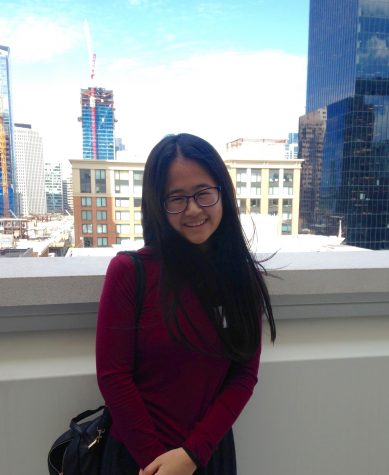Teachers struggle to live and work in San Ramon
December 2, 2016
Dougherty High School teachers are struggling to live in San Ramon due to a combination of a high cost of living, relatively low salaries and a lack of subsidized housing from the district.
In a survey made available to all Dougherty staff members, only 15 of the 60 responders said that they live in San Ramon.The rest live in places as far as Discovery Bay and Mountain View, though most live within a 15-mile radius of San Ramon, such as Castro Valley and Pleasanton. Approximately 47 percent of teachers own their place of residence; the rest rent.
One prominent factor behind this is teacher salaries.
The San Ramon Valley Unified School District offers “competitive salaries [and benefits] compared to other districts around the area,” as noted by district Director of Communications and Community Relations Elizabeth Graswich.
However, SRVUSD pays less than other nearby school districts. Its starting salary is $49,431 while that of the Dublin Unified School District is $62,640 per year. The Pleasanton Unified, Acalanes Unified and Castro Valley Unified School Districts also pay more, with salaries starting at $64,559, $50,641 and $53,531, respectively.
Graswich acknowledges the difference, but argues that salaries and teacher benefits are different and “SRVUSD offers medical, family and life insurance plans that other [school districts] do not offer.”
But for many teachers residing in San Ramon, these benefits cannot match the increasing cost of living. The average household income of a family living in San Ramon is $122,549, far above the district’s starting salary, as well as the state average. In addition, home values have increased by 2.8 percent in San Ramon over the past year with no indication that prices will decrease, according to Zillow, an online real estate database. As a result, several teachers who are also San Ramon residents say they need to rely on their spouse’s income to balance this high cost of living.
“Many teachers in the [San Ramon] Valley are married to non-teachers who make significantly more money. It is very difficult to be a two-teacher household because we do not have our spouse’s high income to balance out our low one,” noted one anonymous staff member.
Compared to the state average, housing prices in San Ramon are abnormally high. According to Zillow, the average price of a home in California is $393,000, which is less than half of San Ramon’s average listing price of $935,995.
“Teachers are priced out of the area, said physical education teacher Adam Seipel. “We can’t afford to live near school comfortably because of the home prices, so we commute over one hour a day. In order to purchase a home, living on two teacher incomes, we have to live outside of the area because the property prices are not anywhere close to the affordable range. We bought a five-bedroom home an hour away (with no traffic) for the price of a two-bedroom condo in San Ramon.”
Although the option of renting an apartment or home in San Ramon exists, the average rent in San Ramon of $2,391 — like the average income and average house price — towers above the state average, which is $1,350, according CBS and RentJungle. Due to the recent surge in housing prices, or “housing boom,” around 50 percent of teachers surveyed stated that their rent or mortgage has increased since first moving in.
Chemistry and AP Environmental Science teacher Annie Nguyen said that the high rent in this area has hurt her economically.
“When I was a first-year teacher, I barely qualified to live in reduced rate housing due to my ‘low-income’ status, but paid more than one half to one third of my monthly salary for rent alone,” stated Nguyen.
Librarian Kerri Pike, who is on the negotiation board for the San Ramon Valley Education Association, the teachers’ union, shares similar sentiments.
“Every year my landlord would raise the rent higher than any raise we would get, if we got a raise,” Pike said. “So I wasn’t making any more money, but I was having to pay more for rent … that is pretty typical around here.”
But it is important to note that the housing boom has affected teachers around the Bay Area, not just San Ramon. The average rent of an apartment in the Santa Clara Unified School District consumes over 40 percent of a starting teacher’s salary; meanwhile, a starting teacher in San Francisco needs to spend 75 percent of their salary to pay rent for an apartment in the city, according to the San Francisco Chronicle.
“Among young teachers, it’s their number one concern. I hear it all the time: ‘I can’t stay in the district if I can’t find a place to live,’” stated San Francisco teachers’ union leader Lita Blanc in a KTVU television interview.
Due to this housing boom, many school districts struggle to fill vacant teacher positions. In the summer of 2015, the San Francisco Unified School District struggled to fill 51 open positions before school started. Similarly, the Santa Clara County has seen a 56 percent increase in vacant and open positions within the past few years. In particular, the Santa Clara Unified School District expects that 7 percent of its teachers will resign at the end of 2016. According to the Learning Policy Institute, there has been a 60 percent increase in open teaching positions in California since 2013.
Often, especially when renewing contracts, teachers contemplate leaving the Bay Area to teach somewhere else — or even worse, leaving the profession altogether. Teachers in the San Ramon Valley are no exception.
“SRVUSD has definitely lost some teachers who have left their profession for a multitude of reasons, Pike said. “They were priced out and the workload was ridiculously hard, and for a lot of people, it was a combination [of both]. They couldn’t afford to live here, they were working ridiculously crazy hours and they were dealing with aggressive parents. They had more and more things put on their plate and they weren’t getting paid any more … That was not a positive working condition and we’ve lost a lot of teachers.”
Many Bay Area school districts are trying to mitigate this problem. In 2007, San Francisco initiated the Teacher Next Door program to help teachers purchase homes in the area. The Santa Clara Unified School District has built subsidized teacher housing. Multiple school districts, including San Francisco Unified, Cupertino Union and Newark Unified, also plan to build subsidized housing.
Dominic Dutra, a real estate developer who helps school districts plan and build teacher housing, said that district-subsidized housing lessens new teachers’ concerns about un-affordable housing, helping with teacher recruitment, according to the San Francisco Chronicle.
“School districts have all of this underutilized land, and here’s a policy that helps them be competitive,” Dutra told the paper.
However, “the [SRVUSD] school board has not taken any steps in regards to the housing issue,” according to Graswich.
Pike has also spoken about subsidized housing, noting that “there are some districts that are offering subsidized housing or working with mortgage companies for lower interest rates for mortgages; none of that is happening in our district.”
In response, the San Ramon Valley Education Association is arguing for raises.
Negotiation team member Robert Gendron, a Dougherty Valley High math teacher, said that there are many difficulties in negotiating.
“Our district is very much on the conservative side and has not been willing to give teachers raises that they can afford,” Gendron stated.
Graswich did not respond by press time.
Pike said the union’s effort has met with moderate success thus far: “At the bargaining table, we did negotiate a raise last year and a small raise the year before … Without the bargaining team negotiating, we wouldn’t have received as high of a raise as we did.”
Though the raise undoubtedly benefits teachers, one survey respondent said the root of the problem is far greater than a simple raise.
“Teachers need a lot more money to afford to live here. Salaries should be doubled. Begging for a few percentage point raise every other year is not going to change that situation much. If you want to live here, the message is obvious: get a real job, earn two times [more] and perhaps come back to teaching as a volunteer job after you have finished earning enough money to live here,” noted an anonymous respondent.
But despite SRVEA’s efforts to alleviate the issue, teachers and students alike feel a need for the school board to take greater action to assist district employees.
Junior Leadership student Rahul Reddy shows solidarity with the teachers’ cause, stating, “We’re pouring so much money into the school system; I don’t see why we can’t give it back to teachers.”




